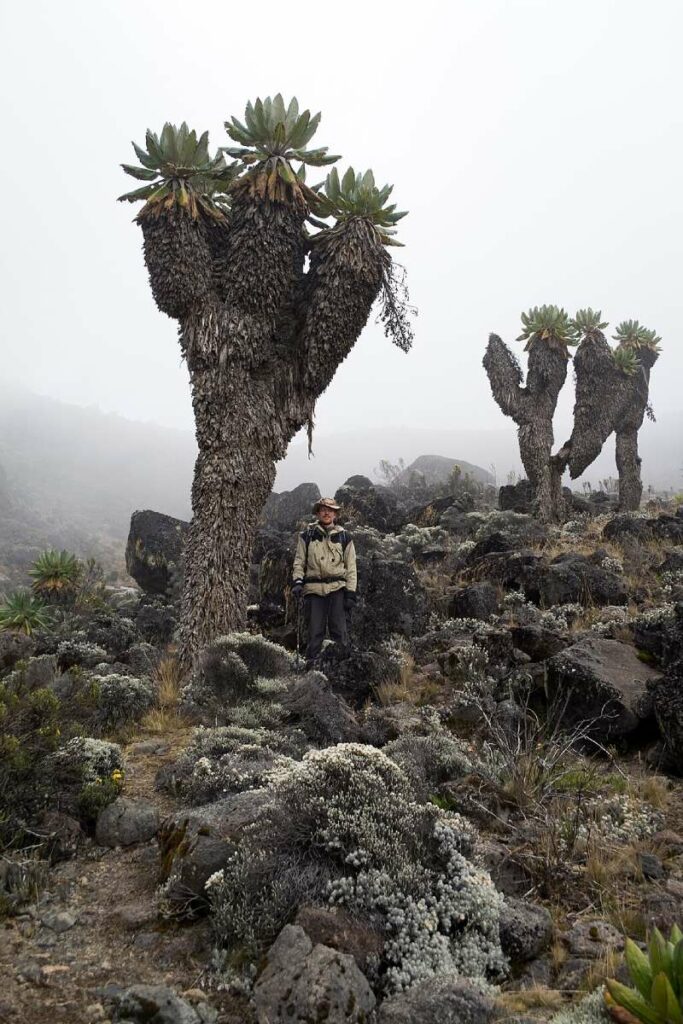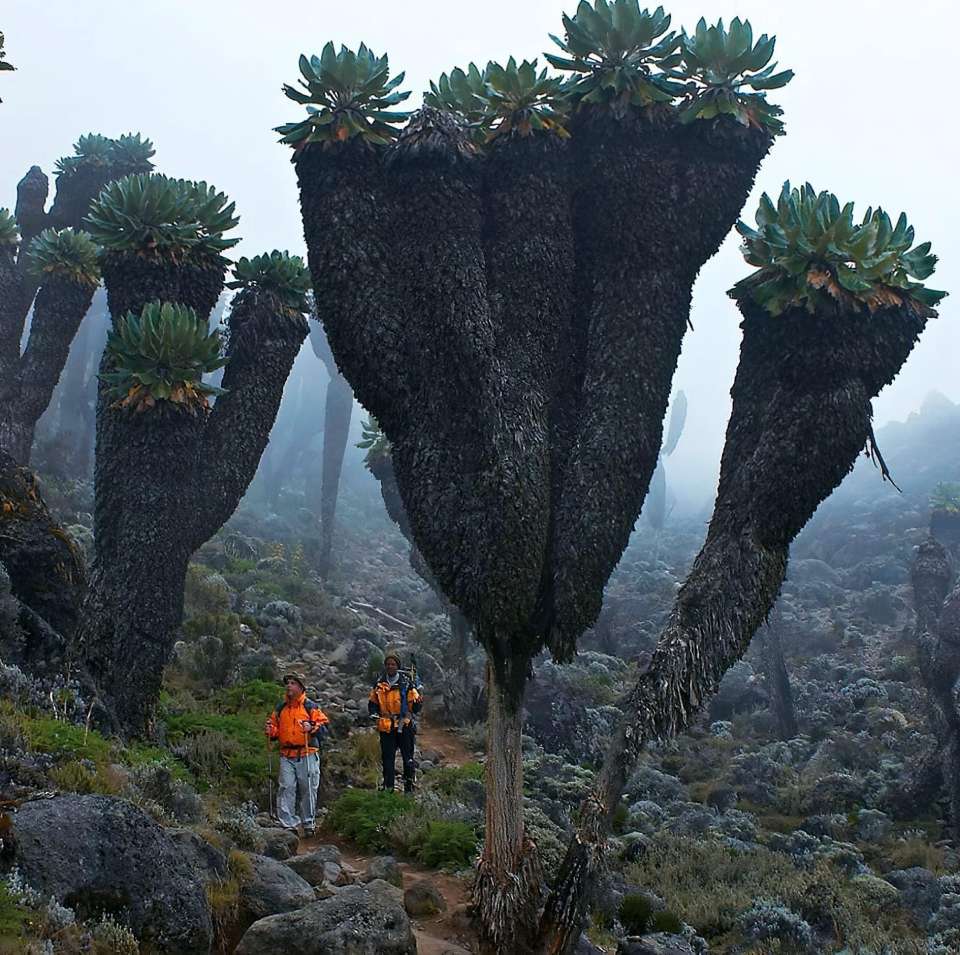Giant Groundsels, scientifically known as Dendrosenecio kilimanjari, are remarkable prehistoric plants that inhabit the slopes of Mount Kilimanjaro in Tanzania. These majestic plants belong to the order Asterales, which also includes daisies and sunflowers, and are part of the family Asteraceae.
The Giant Groundsels found on Mount Kilimanjaro are descendants of a common groundsel ancestor, and their evolution can be traced back approximately one million years. Over time, these plants have undergone adaptations that have enabled them to thrive in the extreme environment of the mountain. They also colonised other mountains by some means, such as wind dispersal of seeds, and these isolated populations adapted in ways different from the parent population, creating new species.

One of the most striking features of Giant Groundsels is their impressive height. These plants can reach towering heights of up to 30 feet (9 meters). Such stature allows them to dominate the alpine landscape and stand out among other vegetation on Kilimanjaro.
Surviving in the harsh conditions of Mount Kilimanjaro presents numerous challenges, including sub-zero temperatures. Giant Groundsels have evolved several adaptations to cope with these extreme cold temperatures. One such adaptation is their ability to store water within their stems and leaves. This water storage helps them endure extended periods of freezing temperatures when liquid water is scarce.
During particularly cold periods, Giant Groundsels also have a fascinating mechanism to protect themselves. They close their leaves tightly, minimizing exposure to the elements and reducing water loss through transpiration. By sealing their leaves shut, they conserve moisture and maintain their vital internal processes.
Additionally, these plants produce a natural anti-freeze substance, which helps prevent ice formation within their tissues. This adaptation further enhances their ability to withstand freezing temperatures.

Furthermore, Giant Groundsels insulate themselves with a layer of dead foliage that accumulates around their base. This layer of organic material acts as insulation, shielding the plant from the extreme cold and providing an additional buffer against frost.
The combination of these remarkable adaptations allows Giant Groundsels to thrive in the unique microclimates found on Mount Kilimanjaro. Their ability to withstand freezing temperatures and survive in such harsh conditions contributes to their status as one of the most captivating and distinctive species on the mountain.
In addition to their ecological significance, Giant Groundsels also hold cultural and aesthetic value. Their towering presence and otherworldly appearance have made them a symbol of the natural beauty and diversity of Mount Kilimanjaro, attracting the attention of climbers, hikers, and nature enthusiasts from around the world.
Featured photo credit: Peter Zahar

